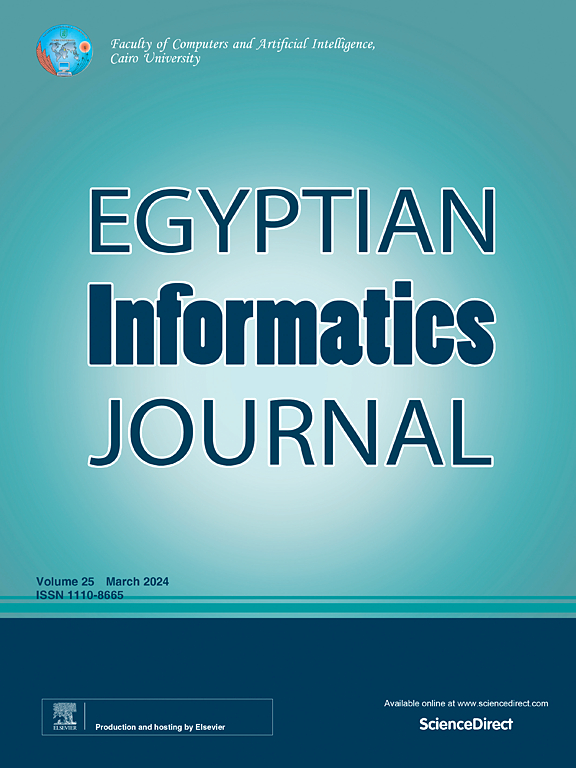Proposal to strength image encryption using blockchain and hybrid chaotic-DNA techniques
IF 4.3
3区 计算机科学
Q1 COMPUTER SCIENCE, ARTIFICIAL INTELLIGENCE
引用次数: 0
Abstract
This research proposes a novel image encryption framework that synergizes blockchain technology with a hybrid approach combining chaotic systems and DNA-based encoding. The presented method begins by decomposing a color image into its red, green, and blue channels. Each channel is then converted from binary to DNA sequences using a predefined mapping, followed by algebraic DNA operations to further obscure the data. The DNA-encoded image is reconstructed and subjected to the Rossler chaotic system, which, using certain initial values and constants, produces three normalized chaotic sequences. These sequences are generated numerically via the Runge–Kutta method. The chaotic sequences are then utilized to permute the image’s rows and columns and to generate additional keys for DNA-based XOR operations. After encryption, the SHA-256 hash of the encrypted image is computed, and the image is uploaded to the Inter Planetary File System (IPFS) to obtain a unique content identifier. All relevant metadata, including the content identifier, hash value, encryption keys, and parameters, are securely stored on a blockchain through a smart contract, ensuring data integrity and non-repudiation. The decryption process reverses these steps to restore the original image. Experimental results confirm the system’s effectiveness, demonstrating high distortion between original and encrypted images and strong resistance to various cryptanalytic attacks. Experimental results show that; MSE values (ranging roughly between 950 and 1300) and PSNR values (approximately 13–15 dB) and some of other measurements indicate a high level of distortion between the original and encrypted images.
利用区块链和混合混沌dna技术增强图像加密
本研究提出了一种新的图像加密框架,该框架将区块链技术与混沌系统和基于dna编码的混合方法相结合。该方法首先将彩色图像分解为红色、绿色和蓝色通道。然后使用预定义的映射将每个通道从二进制转换为DNA序列,然后进行代数DNA操作以进一步模糊数据。对dna编码后的图像进行重构并进行罗斯勒混沌系统处理,利用一定的初始值和常数,得到三个归一化的混沌序列。这些序列是通过龙格-库塔法数值生成的。然后利用混沌序列来排列图像的行和列,并为基于dna的异或操作生成额外的键。加密后,计算加密图像的SHA-256哈希值,并将图像上传到IPFS (Inter Planetary File System)中,获得唯一的内容标识符。所有相关的元数据,包括内容标识符、哈希值、加密密钥和参数,都通过智能合约安全地存储在区块链上,确保了数据的完整性和不可否认性。解密过程颠倒这些步骤以恢复原始图像。实验结果证实了该系统的有效性,显示了原始图像和加密图像之间的高失真,并具有很强的抗各种密码分析攻击能力。实验结果表明;MSE值(大约在950和1300之间)和PSNR值(大约13-15 dB)以及其他一些测量表明原始图像和加密图像之间存在高度失真。
本文章由计算机程序翻译,如有差异,请以英文原文为准。
求助全文
约1分钟内获得全文
求助全文
来源期刊

Egyptian Informatics Journal
Decision Sciences-Management Science and Operations Research
CiteScore
11.10
自引率
1.90%
发文量
59
审稿时长
110 days
期刊介绍:
The Egyptian Informatics Journal is published by the Faculty of Computers and Artificial Intelligence, Cairo University. This Journal provides a forum for the state-of-the-art research and development in the fields of computing, including computer sciences, information technologies, information systems, operations research and decision support. Innovative and not-previously-published work in subjects covered by the Journal is encouraged to be submitted, whether from academic, research or commercial sources.
 求助内容:
求助内容: 应助结果提醒方式:
应助结果提醒方式:


